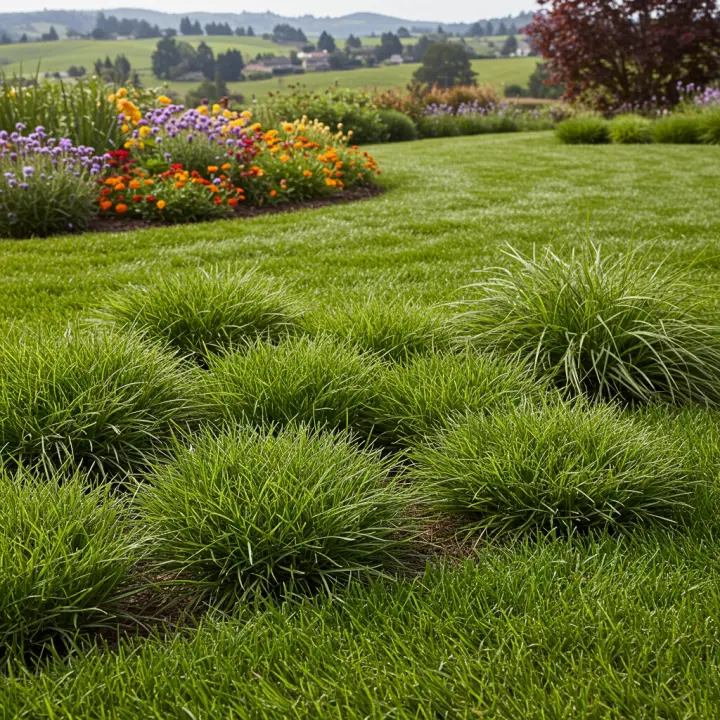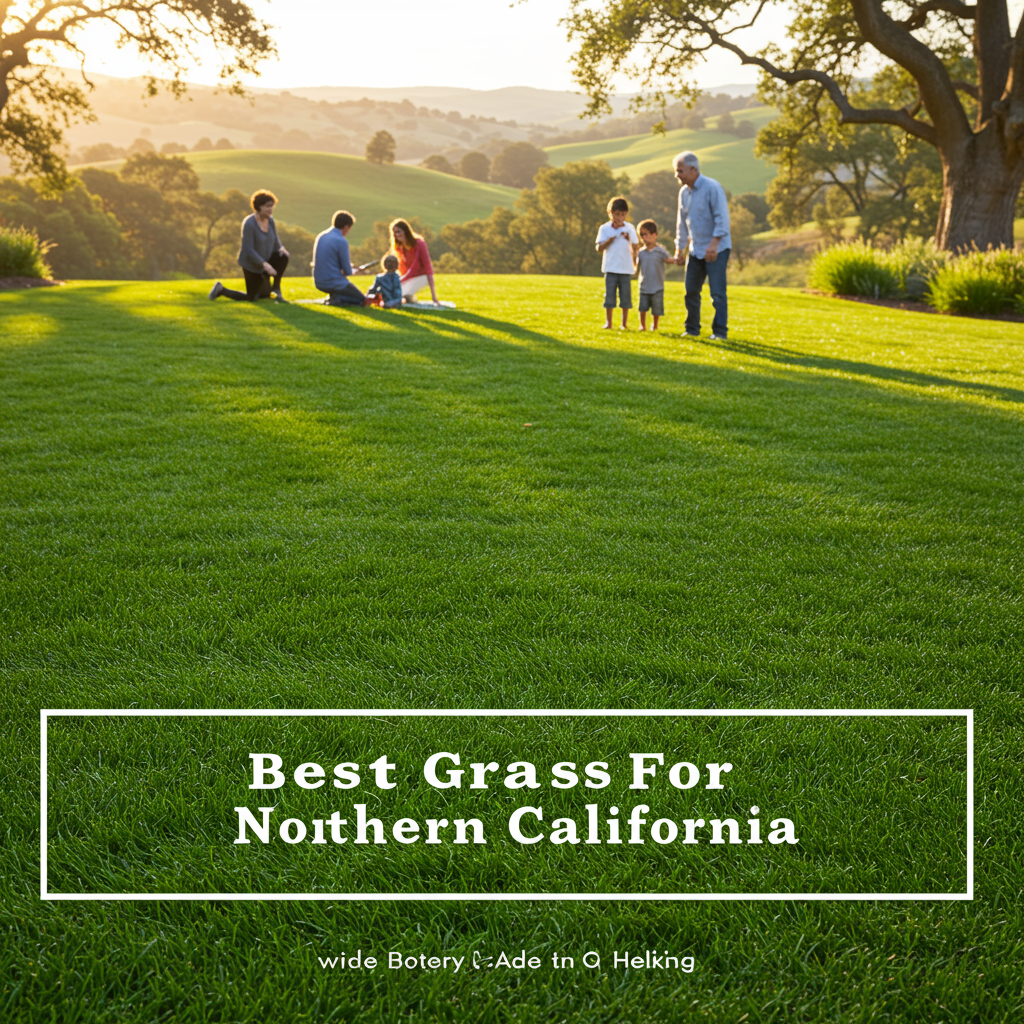For most homeowners, the overall best grass for Northern California is Tall Fescue. Its deep root system makes it exceptionally drought-tolerant, it stands up well to foot traffic, and it stays green for most of the year, making it a versatile and resilient choice for the region’s diverse climates.
Choosing the right grass for your lawn in Northern California can feel like a challenge. With microclimates ranging from the cool, foggy coast to the hot, dry Central Valley, one size certainly doesn’t fit all. This guide will walk you through the top grass types, helping you select the perfect green carpet for your specific needs and location.
Understanding Northern California’s Diverse Climates
Before picking a seed, it’s crucial to understand your local climate. Northern California isn’t one single zone; it’s a collection of many.
- Coastal Regions (e.g., Bay Area, Eureka): These areas experience cooler summers, fog, and mild winters. Grass here needs to tolerate less intense sun and cooler temperatures.
- Inland Valleys (e.g., Sacramento, Redding): Known for scorching hot, dry summers and cooler, wetter winters. Drought tolerance is the number one priority here.
- Foothills and Mountains (e.g., Tahoe, Sierra Nevadas): These regions have warm summers but cold, snowy winters. Grass must be cold-hardy to survive.
Because of these variations, cool-season grasses are almost always the best choice for Northern California lawns, as they thrive in the fall and spring and can handle the temperature swings.
Top Grass Types for Northern California Lawns

Here are the leading contenders for a healthy, beautiful NorCal lawn. Each has its own unique strengths and weaknesses.
Tall Fescue: The All-Around Champion
Tall Fescue is the workhorse of Northern California lawns, and for good reason. Modern “turf-type” tall fescue varieties are far superior to the old, clumpy pasture grass of the past.
- Pros:
- Excellent Drought Tolerance: Its deep root system (up to 3-4 feet) can find water deep in the soil, making it resilient during water restrictions.
- Good Durability: It handles moderate to heavy foot traffic from kids and pets very well.
- Sun and Shade Adaptable: While it prefers full sun, it can tolerate partial shade better than many other grasses.
- Stays Green Year-Round: As a cool-season grass, it maintains good color through mild winters.
- Cons:
- Bunch-Forming Growth: It doesn’t spread aggressively, so bare spots may need to be reseeded.
Best For: Most yards in the Inland Valleys and suburban areas that need a durable, low-water lawn.
Fine Fescues (Creeping Red, Chewings, Hard Fescue): The Shade Specialist
If your yard is dotted with large oak trees or has areas that don’t get much sun, Fine Fescues are your best friend. They are often blended with other seeds.
- Pros:
- Superior Shade Tolerance: This is the best choice for shady or dappled light conditions.
- Low Maintenance: They require less fertilizer, water, and mowing than most other turf grasses.
- Fine Texture: Creates a soft, delicate-looking lawn.
- Cons:
- Low Traffic Tolerance: They don’t hold up well to heavy play or consistent foot traffic.
Best For: Shady yards, low-traffic areas, and homeowners seeking a lower-maintenance option.
Perennial Ryegrass: The Fast Starter
Perennial Ryegrass is known for its beautiful bright green color and incredibly fast germination speed, making it perfect for quickly establishing a lawn or overseeding an existing one.
- Pros:
- Germinates Quickly: You’ll see sprouts in as little as 5-7 days, providing fast ground cover.
- Excellent Wear Resistance: It stands up to foot traffic very well, making it a component in many athletic field seed mixes.
- Beautiful Color: Offers a vibrant, rich green hue.
- Cons:
- Higher Water Needs: It is less drought-tolerant than fescues and requires more consistent watering in the summer.
- Shorter Lifespan: Can struggle during the intense heat of inland summers.
Best For: Overseeding existing lawns in the fall, quick repairs of bare spots, and coastal areas with milder summers.
Kentucky Bluegrass: The Premium Choice
Known for its beautiful dark green color and soft texture, Kentucky Bluegrass (KBG) creates the classic, picturesque lawn. It has a unique ability to spread and self-repair minor damage.
- Pros:
- Self-Repairing: It spreads via underground stems called rhizomes, allowing it to fill in small bare patches on its own.
- Excellent Cold Hardiness: Perfect for lawns in the foothills and mountain regions.
- Aesthetic Appeal: Creates a dense, uniform, and beautiful turf.
- Cons:
- High Water and Fertilizer Needs: It is not drought-tolerant and requires significant resources to stay healthy, making it a poor choice for most valley locations.
- Slow to Establish: Can take several weeks to germinate and establish itself.
Best For: Cooler, higher-elevation areas or as a small percentage (10-15%) in a seed mix with Tall Fescue to add self-repairing qualities.
How to Choose the Right Grass for Your Yard
Consider these factors to make the perfect choice:
- Sun Exposure: How many hours of direct sun does your lawn get per day? For 6+ hours, choose Tall Fescue. For shady spots, choose Fine Fescues.
- Water Needs: Are you in an area with strict water restrictions? Prioritize drought tolerance by choosing Tall Fescue or a Fine Fescue blend.
- Foot Traffic: Do you have active children or pets? Tall Fescue and Perennial Ryegrass offer the best durability.
- Maintenance Level: How much time do you want to spend on lawn care? Fine Fescues are the lowest maintenance, while Kentucky Bluegrass is the highest.
Frequently Asked Questions (FAQs)
Q: What is the single most drought-tolerant grass for Northern California?
A: Tall Fescue, specifically modern turf-type varieties, is the most drought-tolerant and practical grass for the majority of Northern California homes due to its deep root system.
Q: Can I mix different grass seeds together?
A: Absolutely! Most high-quality seed bags sold in California are already a blend. A mix of Tall Fescue (90%) and Kentucky Bluegrass (10%) is very common, combining the drought tolerance of fescue with the self-repairing ability of bluegrass.
Q: When is the best time of year to plant a new lawn in Northern California?
A: Fall is the ideal time to plant cool-season grasses. The warm soil encourages germination, and the mild, rainy winter and spring weather helps the new grass establish a deep root system before summer heat arrives.
Q: Are there any good warm-season grasses for Northern California?
A: While grasses like Bermuda and St. Augustine are popular in Southern California, they are generally not recommended for Northern California. They go dormant and turn brown during the cool winters, which is much longer in NorCal, and they can be highly invasive.
Conclusion
Creating a thriving lawn in Northern California is entirely achievable when you choose the right grass for your specific environment. For a balance of drought tolerance, durability, and year-round green, Tall Fescue is the undisputed champion for most homes. However, if your yard is mostly shade, a Fine Fescue blend will serve you best. By evaluating your yard’s sun, traffic, and water conditions, you can confidently plant a lawn that will not only survive but flourish for years to come.

